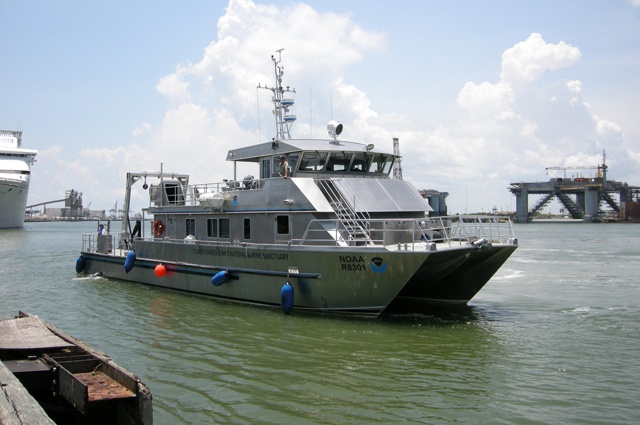The Flower Garden Banks National Marine Sanctuary is one of 14 federally designated underwater areas protected by the Office of Marine Sanctuaries as part of the National Oceanic and Atmospheric Administration.
The sanctuary’s staff is based in Galveston, conducting research and providing education and outreach for recreational divers, industry, educators and students. Scientists work from a specially commissioned research ship, the Manta, to study a variety of issues, including: how coral settles on the reef, deep-water habitats, high-tech mapping of the ocean floor (which is as deep as 476 feet here), and census and identification of manta rays. Their tools include scuba diving, remotely operated vehicles—basically, small boxes carrying cameras and other instruments controlled through a long cable connected to the ship—and submersibles: underwater vessels that can hold humans, or, more commonly, are remotely controlled.
Coral reef monitoring at the East and West banks since 1978 and at Stetson since 1993 represents one of the longest-running such programs in the world. The work includes regularly taking photographs at specific stations, recording video of specific areas and conducting surveys of fish and other species. These surveys make it possible to identify invasive species and determine the health of a particular species and the reef community in general. For example, a spike in the numbers of algae-eating fish could mean a water quality problem, which causes more algae growth. Water quality is regularly measured by on-site instruments and an automated system on the Manta.
“Isolation and distance from shore give the Flower Gardens a better chance for the long haul,” says Quenton Dokken, executive director of the Gulf of Mexico Foundation. “But all the pieces of the Gulf are linked, and all are critical. What we do to one, we do to the others.”
For more information, visit the Flower Gardens website.

